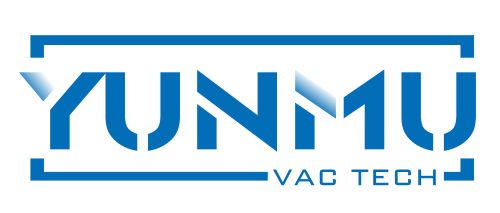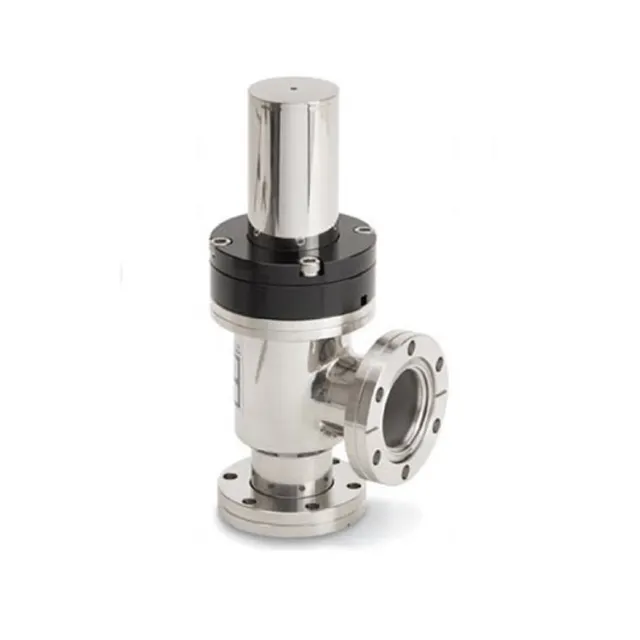The Vital Role of Vacuum Valves in Semiconductor Manufacturing Processes
In the semiconductor manufacturing industry, precision, reliability, and cleanliness are paramount. Every component within the manufacturing process must operate flawlessly to ensure the production of high-quality semiconductor devices. Among these components, the vacuum valve holds a critical position. The vacuum valve is integral to maintaining controlled environments, regulating pressure, and safeguarding sensitive equipment throughout semiconductor fabrication.
Understanding why vacuum valves are essential in semiconductor manufacturing requires an exploration of their specific roles, the unique challenges of the semiconductor environment, and how these valves contribute to operational efficiency and safety. This article delves into these aspects, explaining the indispensable nature of vacuum valves in this cutting-edge industry.
The Functionality of Vacuum Valves in Semiconductor Manufacturing
Maintaining Precise Vacuum Environments
Semiconductor fabrication processes often require ultra-clean, controlled vacuum environments to prevent contamination and enable precise chemical reactions. Vacuum valves play a key role in creating and sustaining these environments by regulating the flow of gases and maintaining the necessary vacuum levels.
By carefully controlling vacuum pressure, vacuum valves help avoid fluctuations that could disrupt the delicate balance of processes like chemical vapor deposition (CVD) or physical vapor deposition (PVD). This precise control is essential for achieving the exact material properties and layer thicknesses demanded in semiconductor devices.
Protecting Equipment from Damage and Contamination
Equipment used in semiconductor manufacturing is highly sensitive and expensive. Vacuum valves contribute to protecting this equipment by preventing pressure spikes or backflow that could cause mechanical damage or introduce contaminants.
For instance, check valves prevent reverse flow that might allow impurities to enter critical chambers. Relief valves safeguard systems by venting excess pressure safely. Together, these vacuum valves maintain system integrity and help prolong the lifespan of essential manufacturing tools.
Challenges in Semiconductor Manufacturing Addressed by Vacuum Valves
Handling Ultra-High Vacuum and Cleanliness Requirements
Semiconductor processes often operate under ultra-high vacuum (UHV) conditions. Achieving and maintaining these conditions is challenging due to the stringent cleanliness and leak-tightness required.
Vacuum valves designed specifically for semiconductor manufacturing are built to minimize outgassing, particulate generation, and leaks. Materials and seals used in these valves meet high purity standards, ensuring the vacuum environment remains uncontaminated and stable.
Managing Complex Gas Flow and Process Control
Multiple gases are used throughout semiconductor fabrication for etching, doping, or deposition. Managing their flow precisely is critical to product quality. Vacuum valves regulate these gas flows with high accuracy, allowing for fine-tuned process control.
Moreover, these valves enable quick isolation of system sections, facilitating maintenance or emergency shutdowns without compromising the entire production line. This flexibility is vital for minimizing downtime in a highly competitive industry.

Integration of Vacuum Valves with Advanced Semiconductor Equipment
Compatibility with Automation and Monitoring Systems
Semiconductor manufacturing relies heavily on automation for consistency and precision. Vacuum valves compatible with automated control systems enable real-time monitoring and adjustment of vacuum levels and gas flows.
This integration allows manufacturers to maintain optimal process conditions, react swiftly to deviations, and collect valuable operational data for analysis and optimization. Automated vacuum valve control thus supports both quality assurance and process improvement.
Customization and Specialized Valve Designs
The unique demands of semiconductor manufacturing have led to the development of specialized vacuum valves. These include valves with low particle generation, fast actuation speeds, and specific materials resistant to corrosive process gases.
Choosing vacuum valves tailored to the specific needs of a semiconductor process enhances reliability and performance. Manufacturers benefit from valves designed to fit seamlessly into complex equipment setups, improving system uptime and product consistency.
Safety and Compliance in Semiconductor Facilities
Ensuring Safe Handling of Hazardous Gases
Many gases used in semiconductor manufacturing are toxic, flammable, or reactive. Vacuum valves contribute to safety by providing reliable isolation, controlled venting, and prevention of backflow, reducing the risk of accidental release or exposure.
Well-maintained vacuum valves also support emergency shutdown procedures, allowing safe containment of hazardous substances. This capability is essential to protect personnel, equipment, and the environment.
Adherence to Industry Standards and Regulations
Semiconductor manufacturing facilities must comply with strict safety and environmental standards. Vacuum valves that meet these regulations ensure legal compliance and minimize liability.
Manufacturers selecting certified vacuum valves demonstrate commitment to best practices and operational excellence, which can be an important competitive advantage.
Optimizing Vacuum Valve Performance for Semiconductor Success
Regular Maintenance and Inspection
To maintain optimal vacuum valve performance, regular inspection and maintenance are crucial. This includes checking seals, verifying actuation function, and monitoring for wear or contamination.
Proactive maintenance reduces the risk of unexpected failures that could halt production or compromise product quality. It also extends the service life of the vacuum valves, providing better return on investment.
Collaboration with Specialized Valve Suppliers
Working with suppliers experienced in semiconductor-grade vacuum valves helps ensure that the valves chosen meet all technical and safety requirements. Expert guidance can assist in selecting, installing, and maintaining vacuum valves tailored to specific process needs.
This collaboration supports innovation and operational reliability in an industry where precision matters most.
Frequently Asked Questions
What makes vacuum valves critical in semiconductor manufacturing?
Vacuum valves maintain precise vacuum conditions, protect sensitive equipment, and enable controlled gas flow, all of which are essential for process accuracy and safety in semiconductor production.
How do vacuum valves contribute to safety in semiconductor facilities?
They provide reliable isolation and pressure relief, preventing leaks or backflow of hazardous gases, thus protecting personnel and equipment from potential hazards.
What features distinguish vacuum valves designed for semiconductor applications?
These valves often feature low particle generation, ultra-clean materials, fast actuation, and compatibility with automation systems to meet the demanding requirements of semiconductor processes.
How important is maintenance for vacuum valves in semiconductor manufacturing?
Regular maintenance is vital to ensure valves function correctly, avoid contamination, prevent failures, and maintain the overall integrity of the vacuum system.
Table of Contents
- The Vital Role of Vacuum Valves in Semiconductor Manufacturing Processes
- The Functionality of Vacuum Valves in Semiconductor Manufacturing
- Challenges in Semiconductor Manufacturing Addressed by Vacuum Valves
- Integration of Vacuum Valves with Advanced Semiconductor Equipment
- Safety and Compliance in Semiconductor Facilities
- Optimizing Vacuum Valve Performance for Semiconductor Success
- Frequently Asked Questions

